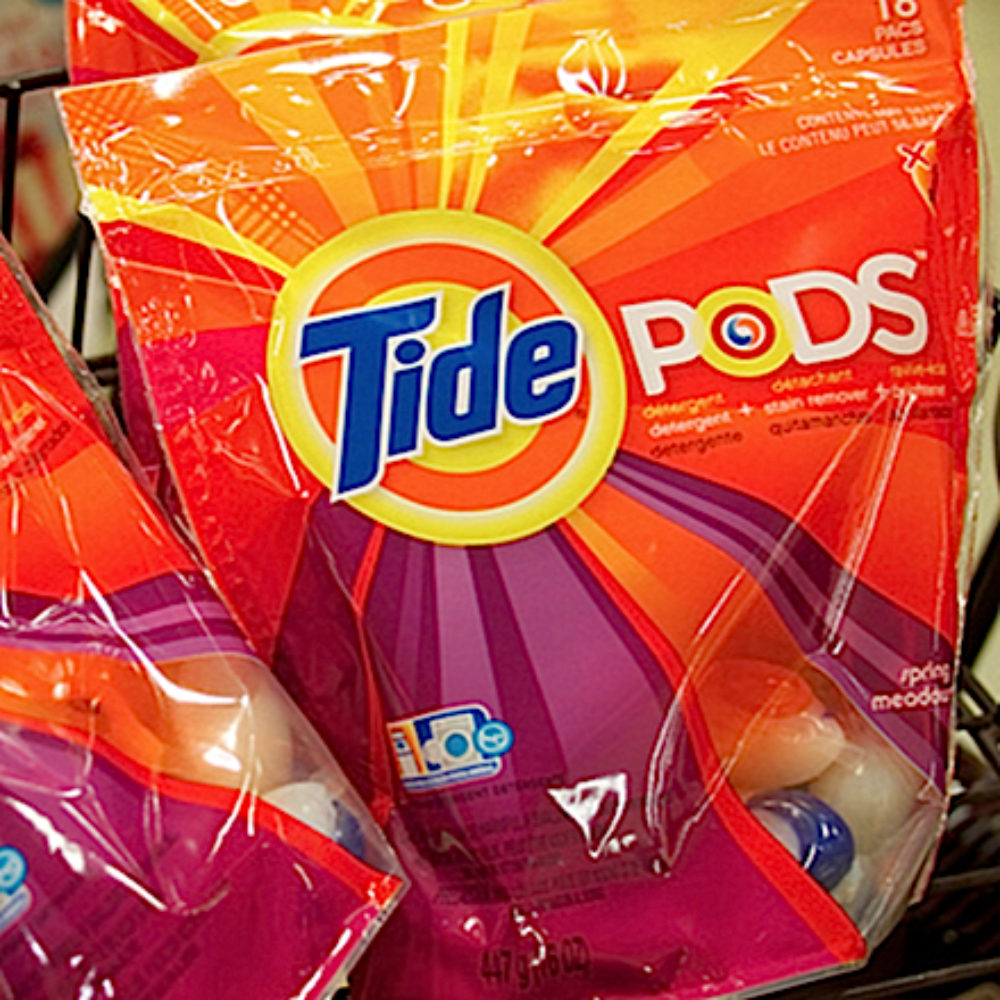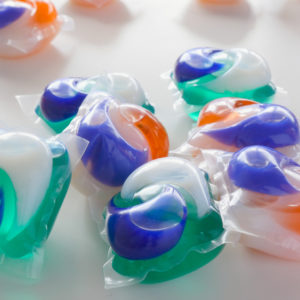Tide Pod Packaging Changes Fail To Detract From Candy-Like Appearance

Despite certain changes to packaging for laundry detergent packets in recent years, a large number of Tide Pod poisoning cases continue to be reported, especially among infants and young children who believe the brightly colored packets are candy or a chew toy.
Although most recent media attention has focused on the so-called “Tide Pod Challenge”, which has resulted in injuries to older children and teens, the American Association of Poison Control Centers (AAPCC) indicates that there continue to be more than ten thousands incidents reported each year involving children five years old and younger exposed to laundry packets.
First introduced in 2012, the manufacturers of Tide Pods and other single-load laundry detergent packets have been criticized for designing their products with multiple colors that are enticing to young children, and for packaging the detergent in containers the typically resemble candy or snacks.

Learn More About
Single-load Laundry Detergent Pod Poisoning May Result in Serious Injury for Children.
Learn More About this Lawsuit SEE IF YOU QUALIFY FOR COMPENSATIONAlthough some design changes to Tide Pod packaging have been made in recent years, including the coating of the packet and use of opaque containers, the manufacturer has continued to resist other simple changes that may avoid many of the laundry pod problems for young children, including individually wrapping Tide Pods and using child-proof containers.
In February, lawmakers in New York revived legislation first proposed in 2015, which would place new packaging requirements on Tide Pods and similar products.
In response, Procter & Gamble sent a letter to the lawmakers on April 2, highlighting some of the changes it has already made.
According to the manufacturer, it has enacted a number of changes, including:
- Child-resistant packaging for bags and tubs
- Bitter outer layer flavoring to dissuade biting
- A educational campaign on how to use and store the pods safely
- Selling some “family friendly” brands in all-white coloring
- Changing the tubs and bags to opaque colors so children cannot see the packets inside.
The changes closely follow voluntary standards put in place by ASTM International, formerly known as the American Society for Testing and Materials, which P&G helped develop. However, many of the companies, including Procter & Gamble, still sell a number of their laundry pods in bright, candy-like colors.
Children still seem to be attracted to the pods, resulting in tens of thousands of injuries in recent years. At least eight deaths have also been linked to laundry pod poisoning incidents.
Since Tide Pod packaging changes have proven ineffective at reducing the incidence of young children being exposed to the concentrated laundry detergent, Consumer Reports has indicated that it no longer recommends the use of the products, and many critics have called for Tide Pods to be recalled from the market.
Manufacturers now face potential laundry pod injury lawsuits being pursued by families nationwide, alleging that serious complications could have been avoided if the steps had been taken to ensure the safety of the products.
Get more articles like this sent directly to your inbox.
"*" indicates required fields





0 Comments